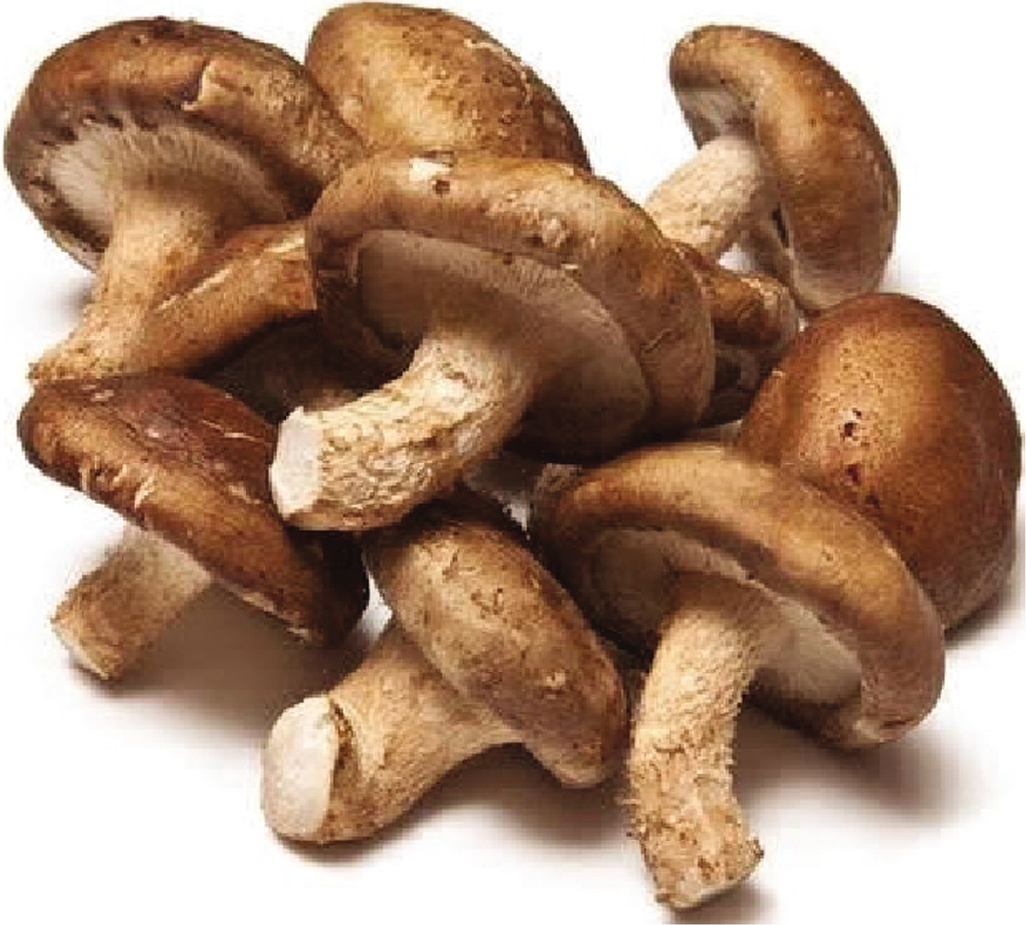Translate this page into:
Shiitake flagellate dermatitis (toxicoderma): A case report
Correspondence to ACHALA BALASURIYA; balasuriya.ac@gmail.com
How to cite this article: BALASURIYA A, GOEL A. Shiitake flagellate dermatitis (toxicoderma): A case report. Natl Med J India 34:2021;161-62.
Abstract
We report a patient with flagellate dermatitis (shiitake dermatitis) appearing 48 hours after consumption of shiitake mushrooms in a previously healthy 37-year-old man. The skin lesion resolved completely within a week following treatment with antihistamine and topical steroid cream (dexamethasone 0.1%).
INTRODUCTION
The development of linear erythematous whiplash-like lesions termed flagellate dermatitis or toxicoderma following consumption of shiitake mushrooms was first reported in Japan by Nakamura.1 Lentinula edodes (shiitake mushrooms) is a variety of mushrooms grown mainly in the eastern parts of Asia and a favourite item of Asian cuisine.2 The rash could appear between 12 hours and 5 days after the consumption of shiitake mushrooms.1 The exact mechanism underlying the development of the characteristic lesions has not been elaborated.
THE CASE
A 37-year-old man, a resident of France, presented to the emergency department with a linear erythematous rash that appeared spontaneously and dramatically on his chest, abdomen, buttocks and thighs. He appeared obviously concerned and anxious. The rash had appeared initially on the trunk and subsequently spread to involve the thighs and buttocks and was mildly pruritic. He did not have any prior history of any form of allergy, urticarial skin rash or bronchial asthma. He had not received treatment with anticancer agents (bleomycin or peplomycin). He also denied any trauma, unnatural sexual preferences/practices, severe pruritus or substance abuse. Physical examination showed extensive linear lesions spread over the abdomen, flanks and buttocks (Fig. 1). The patient’s complete blood count, C-reactive protein, erythrocyte sedimentation rate and transaminases were within normal ranges.

- Rash on day 1 (top right), on day 3 (top left and bottom right), fading rash on day 5 (bottom left)
On further questioning, the patient revealed that this rash had developed dramatically while he was on a plane from Europe. He further confirmed that he had eaten some raw mushrooms while in Zurich, Switzerland, 2 days ago.
Following treatment with antihistamines and topical steroid cream, the rash faded and eventually disappeared.
DISCUSSION
Flagellate mushroom dermatitis or shiitake dermatitis was first reported by Nakamura in 19771 in Japan. Many cases have been reported in Japan and Korea and a few cases from the USA, France and Germany.2 Shiitake or L. edodes is mainly used in Chinese and Japanese cuisine and is the second most consumed variety mushroom all over the world.3 The typical rash occurs in the form of linear, erythematous flagellate lesions appearing 12 hours to 5 days after ingestion of raw or undercooked shiitake mushrooms. The lesions usually affect the trunk, neck and limbs and resolves within a few days to 2 weeks.4
Flagellate dermatitis that follows consumption of raw or undercooked shiitake mushrooms (Fig. 2) results from a toxic epidermal damage.1 In a typical scenario, the patient develops parallel, whiplash-like infiltrated erythema with papulae or papulo-vesicular rash, arranged like scratches that are associated with severe itching 1–2 days after eating shiitake mushrooms.1 The linear pattern of the lesions gives rise to the name flagellate dermatitis, as they appear like whiplash injuries.2

- Shiitake mushrooms
The pathophysiology of this type of dermatitis is not well known, but it is believed that it results from toxicity of the lentinan polysaccharide present in the mycelium of the fungus. This substance enhances vasodilatation and inflammation caused by the mediator interleukin protein.1,4 Nakamura also described patients treated for gastric and intestinal adeno-carcinoma with fungus extract had developed similar reactions to those caused by shiitake.1 From a chemical standpoint, lentinan is a polysaccharide with an immune-modulating and antiproliferative effect, for which it has been administered in Japan since 2000 as an adjuvant cancer therapy.5 Reports also suggest late sensitization of T cells in the process, and some patients may develop asthma or contact dermatitis following the first episode.6
Although previous reports suggest that raw or undercooked mushrooms are the cause of flagellate dermatitis, there is evidence that even well-cooked shiitake mushrooms can cause a similar reaction.7 Histopathological features described are usually non-specific, but epidermal spongiosis and lymphocyte infiltrate in the dermis have been noticed.8
Bleomycin used for cancer treatment can cause a similar skin lesion; however, mucosal involvement is more common in this form as opposed to shiitake dermatitis and further, the lesions that appear following bleomycin treatment leave hyperpigmentation upon healing.1 Bleomycin is a cytostatic antibiotic of the glycopeptide class that is extracted from the fermentation of Streptococcus verticillus.9 Flagellate dermatitis has also been reported with drugs such as peplomycin (a bleomycin derivative) and docetaxel.10
We did not perform histopathological examination as the clear history and clinical features were sufficient for the diagnosis. The lesions resolved completely within 1 week with oral antihistamines and topical steroid cream.
Conclusion
With a widespread preference for exotic cuisine and increasing international travel, there is a greater chance that even individuals from uncommon destinations present with this dramatic and disturbing condition. An unsuspecting physician is likely to get unnerved in such situations. Hence, when patients present with bizarre skin eruptions, a clinician should always suspect exotic food allergies.
Conflicts of interest
None declared
References
- Toxicoderma caused by shiitake (Lentinus edodes) Jpn J Clin Dermatol. 1977;31:65-8.
- [Google Scholar]
- Shiitake dermatitis: Flagellate dermatitis after eating mushrooms. Hautarzt. 2001;52:132-5.
- [CrossRef] [PubMed] [Google Scholar]
- Allergy and toxicoderma from shiitake mushrooms. J Am Acad Dermatol. 1991;24:64-6.
- [CrossRef] [Google Scholar]
- Pustular flagellate dermatitis after consumption of shiitake mushrooms. JAAD Case Rep. 2015;1:117-19.
- [CrossRef] [PubMed] [Google Scholar]
- Occupational protein contact dermatitis from shiitake mushroom and demonstration of shiitake-specific immunoglobulin E. Contact Dermatitis. 2005;53:211-13.
- [CrossRef] [PubMed] [Google Scholar]
- Flagellanten dermatitis auf Shiitake-Pilze. Hautarzt. 2007;58:1021-2.
- [CrossRef] [PubMed] [Google Scholar]
- Flagellate dermatitis after consumption of Shiitake mushrooms. Postepy Dermatol Alergol. 2014;31:187-90.
- [CrossRef] [PubMed] [Google Scholar]
- Bleomycin-induced flagellate dermatitis. BMJ Case Rep. 2013;2013
- [CrossRef] [PubMed] [Google Scholar]




